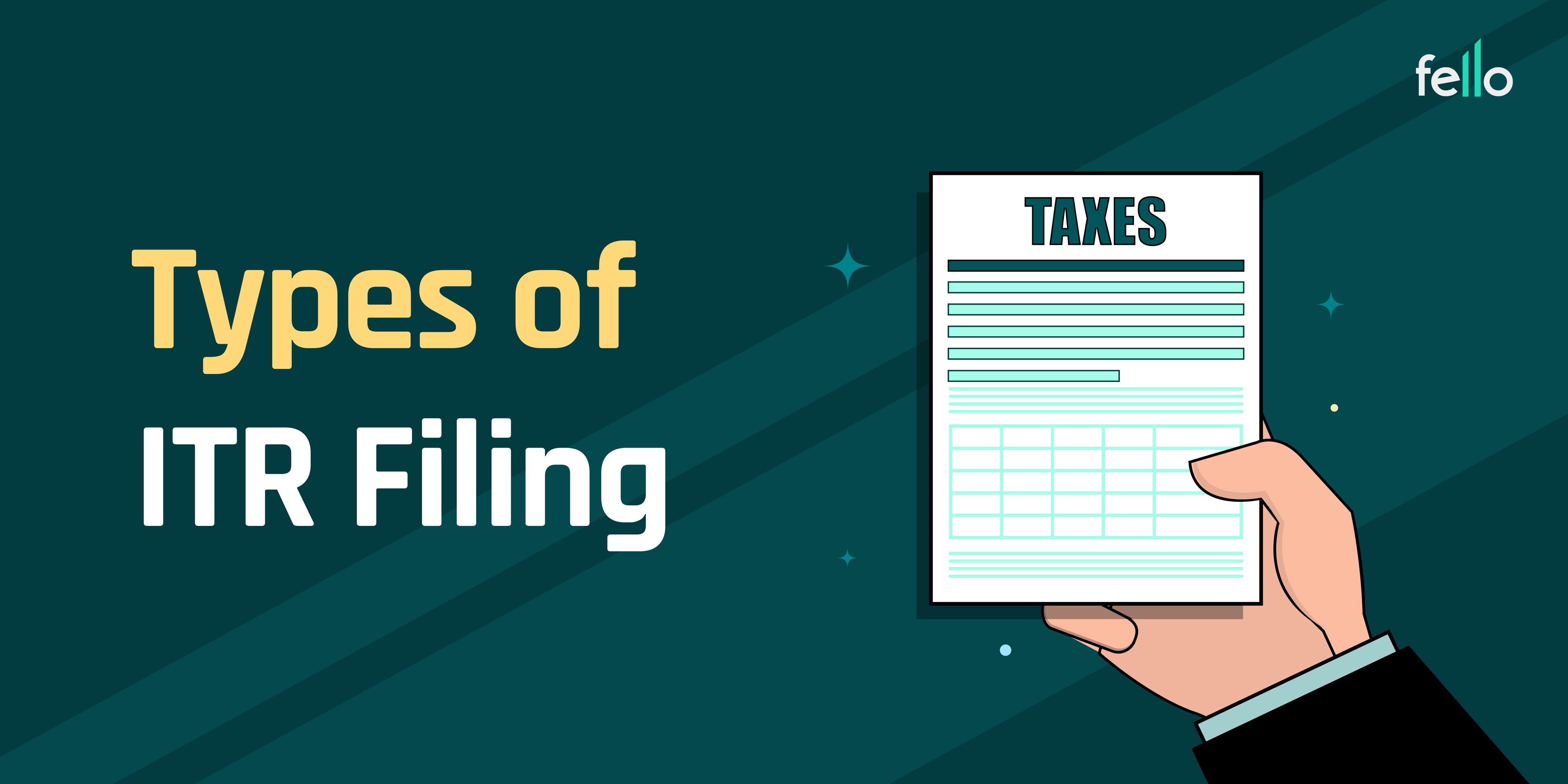In India, nearly 60% of people file an Income Tax Return (ITR), yet a large percentage of taxpayers remain confused about which ITR form they are supposed to fill. With different income sources, categories, and filing criteria, this uncertainty often leads to delays or incorrect filings. After the announcement of the ITR filing date 2025, with 15th September 2025 set as the last date, the confusion has grown further, especially around the selection of the right form and understanding the various Types of ITR Filing. If you’re facing similar doubts, read further to understand simply
What is Income Tax Return Filing?
Income Tax Return (ITR) is a form through which individuals and entities submit information about their earnings and taxes paid to the Income Tax Department. Filing an ITR ensures you meet legal obligations, and it may also help you claim tax refunds. There are different forms available based on your income type and category, namely- ITR 1, ITR 2, ITR 3, ITR 4, ITR 5, ITR 6, and ITR 7. Here’s a quick table to help you understand these forms better:
| ITR Form | Ideal For | Income Sources | Key Conditions |
| ITR-1 (Sahaj) | Salaried individuals | Salary, one house property, other sources | Income up to ₹50 lakh; resident only |
| ITR-2 | Individuals & HUFs | Capital gains, foreign income, multiple properties | No business income |
| ITR-3 | Professionals & Proprietors | Business/professional income | Must maintain books of accounts |
| ITR-4 (Sugam) | Small businesses under presumptive scheme | Business or professional income | Income up to ₹50 lakh (44AD/44ADA/44AE) |
| ITR-5 | Firms, LLPs, AOPs | Business and other income | Not for individuals or HUFs |
| ITR-6 | Companies | Business and other income | Excludes Sec 11-exempt entities |
| ITR-7 | Trusts, NGOs | Income from donations, property held in trust | Must be eligible under Sec 139(4A-4F) |
Avoid these 5 Mistakes That Could Get Your ITR Rejected
What is ITR Used For?
People often ask, “What is ITR used for?” Apart from being a legal requirement, filing ITR offers several practical benefits:
- It helps you claim refunds for excess tax deducted.
- Acts as proof of income for financial activities like applying for loans or visas.
- Serves as official documentation of your annual earnings and taxes paid.
Whether you’re salaried or self-employed, filing ITR builds your financial credibility.
Who is Eligible for ITR?
Wondering “Who is eligible for ITR?” You are required to file ITR if:
- Your gross annual income crosses the exemption threshold (₹2.5 lakh for individuals below 60)
- You wish to claim a TDS refund
- You earn income from multiple sources like rent, business, or capital gains
- You hold foreign assets or earn foreign income
- You’ve deposited ₹1 crore or more in one or more bank accounts
- Your annual electricity bill exceeds ₹1 lakh
Even if your income is below the taxable limit, filing ITR voluntarily can be helpful.
What is My Filing Type in ITR?
The next common query is: “What is my filing type in ITR?”
To determine this, you need to assess:
- Your income sources, whether from salary, business, or investments
- Your residential and legal status, individual, HUF, company, trust, etc.
- The tax scheme you follow, regular or presumptive
For example, a full-time employee with no other income usually goes with ITR-1, while a consultant or freelancer using presumptive taxation would likely file ITR-4.
Why Understanding the Types of ITR Filing Matters
Knowing the correct form among the various Types of ITR Filing ensures you:
- Meet your legal requirements correctly
- Avoid unnecessary notices or rejections
- Get your refunds processed smoothly
Many people make the mistake of choosing the wrong ITR form, which can delay processing or even invite penalties. Here are Top 5 Reasons to Hire a CA for Your Tax Filing in India
Conclusion
Understanding the Types of ITR Filing is essential to filing your taxes correctly and making the most of tax benefits available to you. With new tax rules and deadlines in play, it’s more important than ever to stay informed. Now that you know what is ITR used for, who is eligible for ITR, and what your filing type in ITR is, you’re already ahead in the tax filing.

